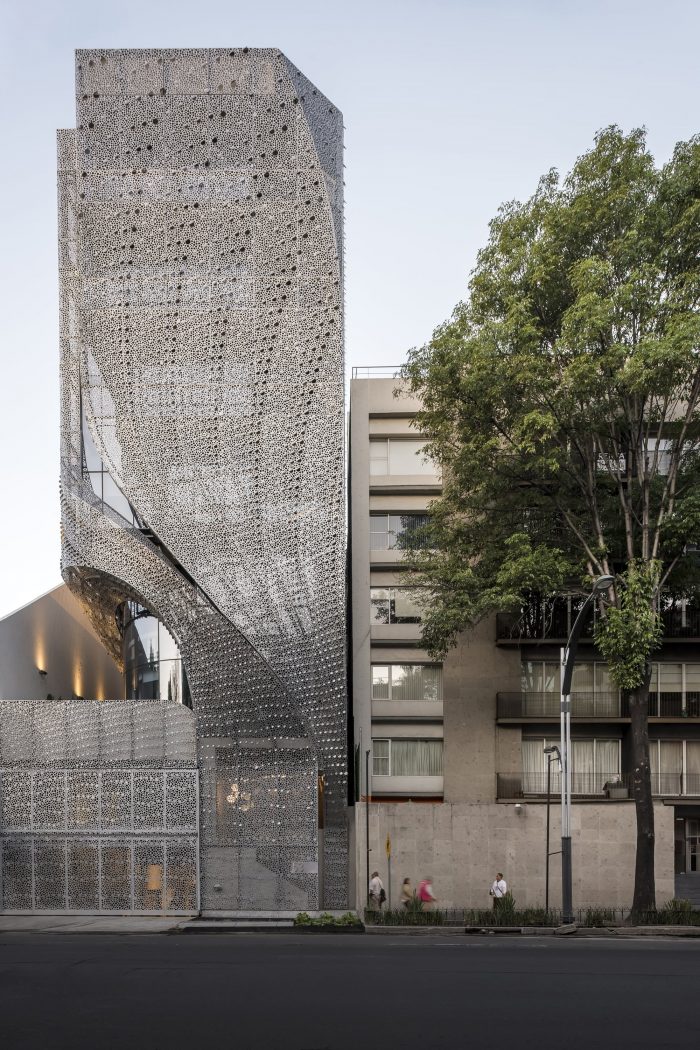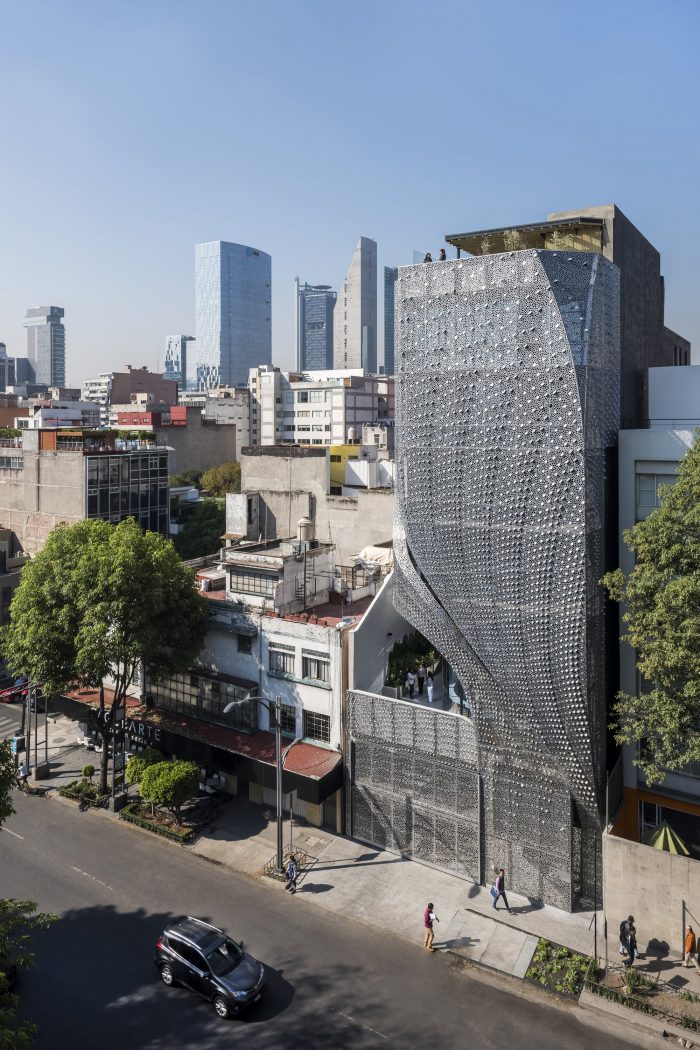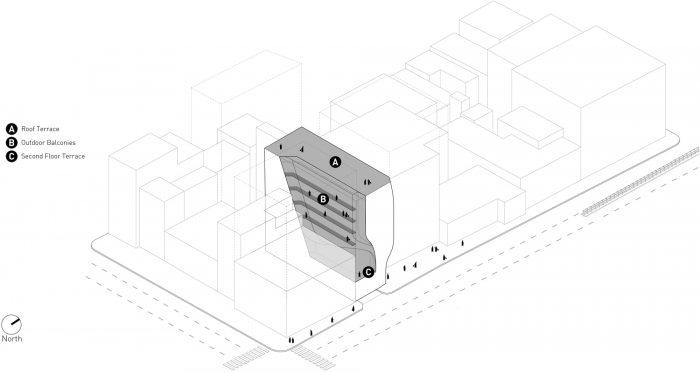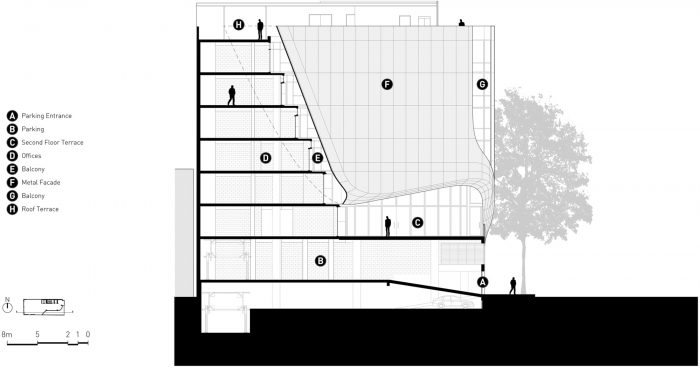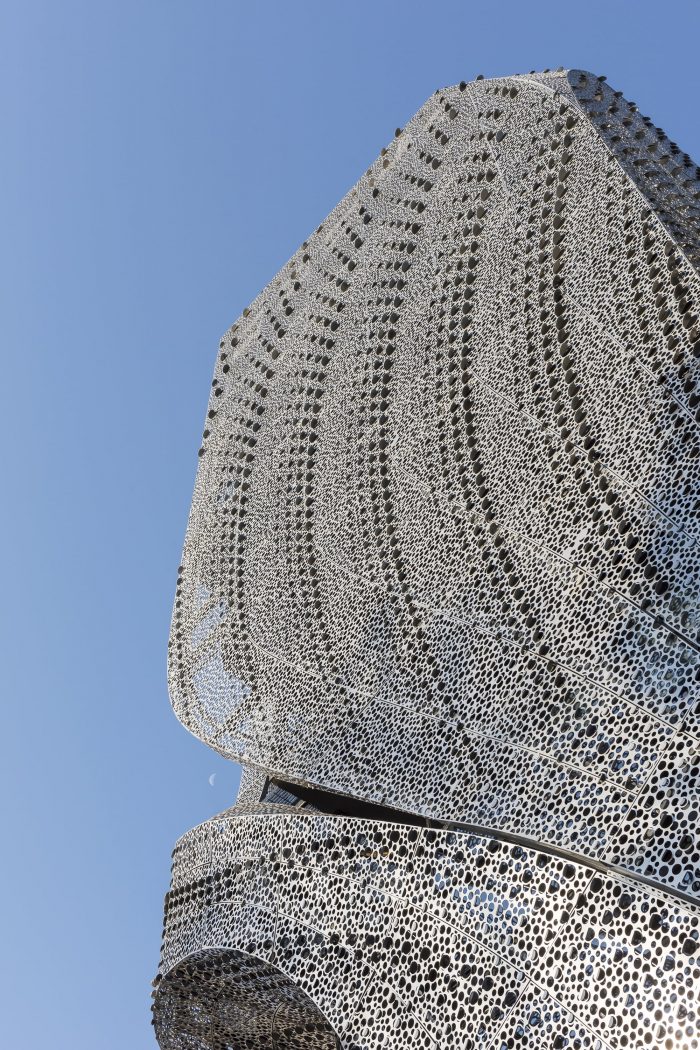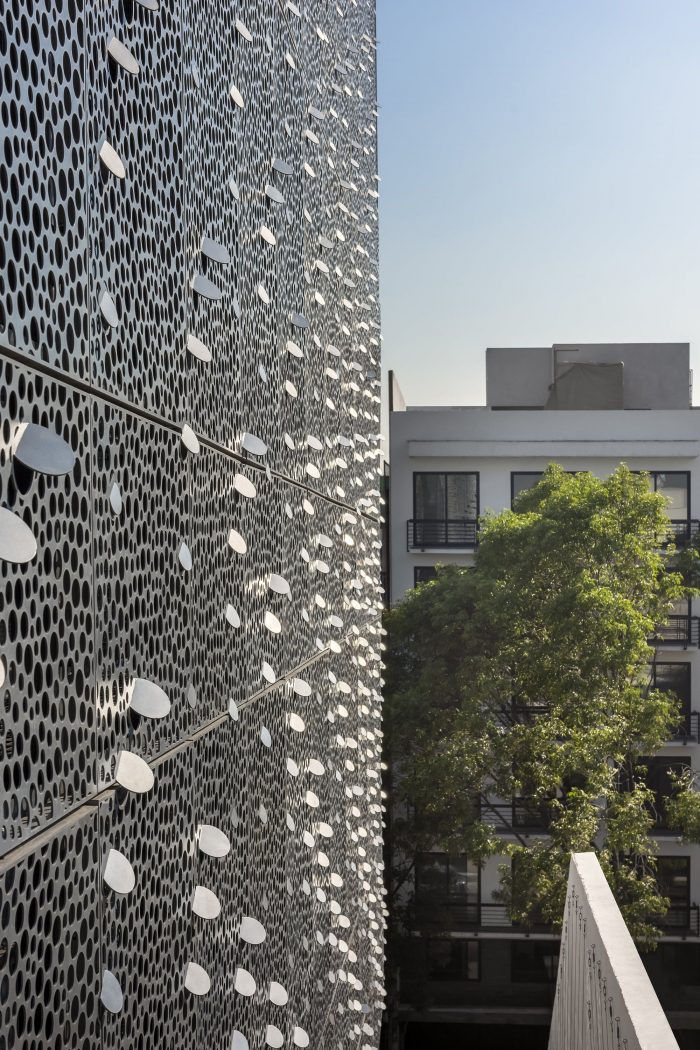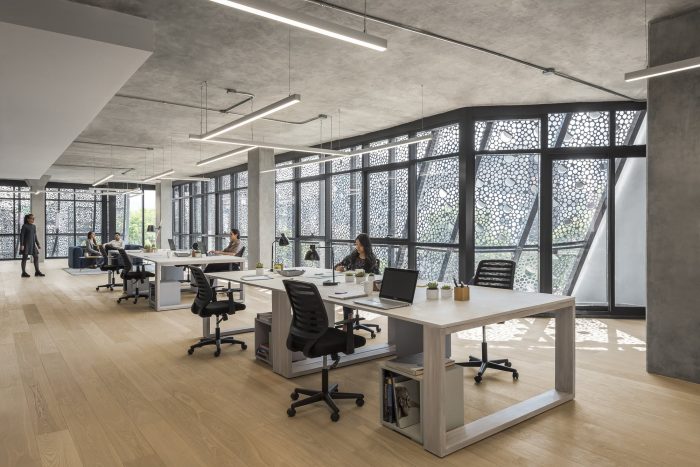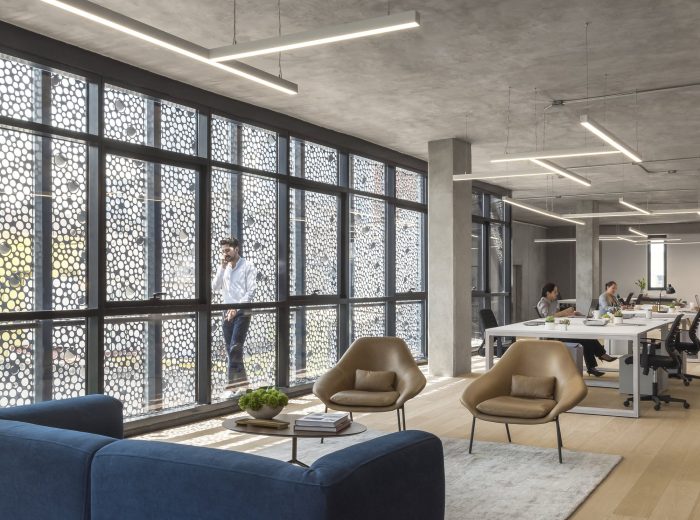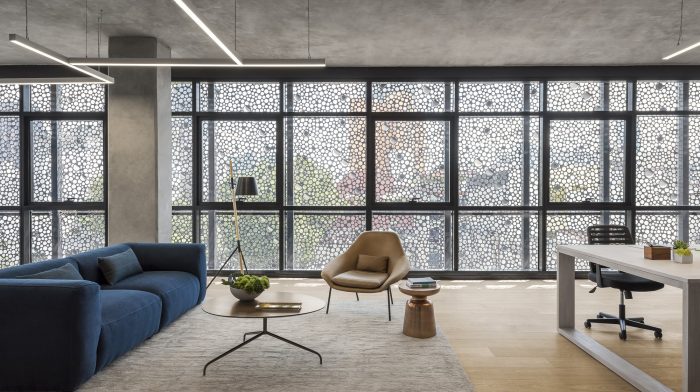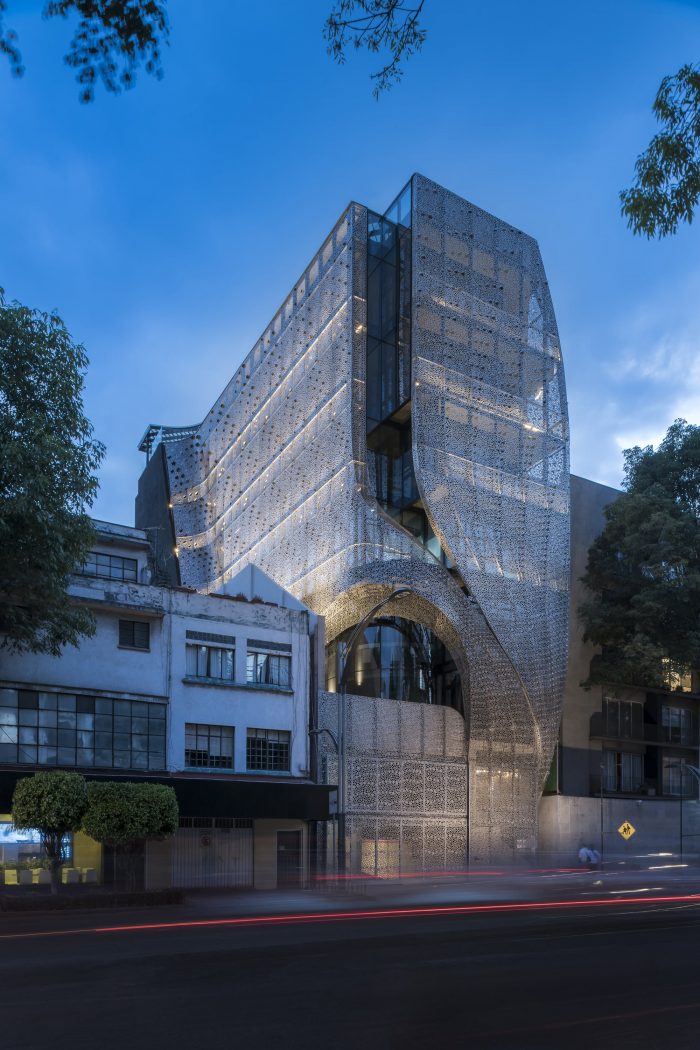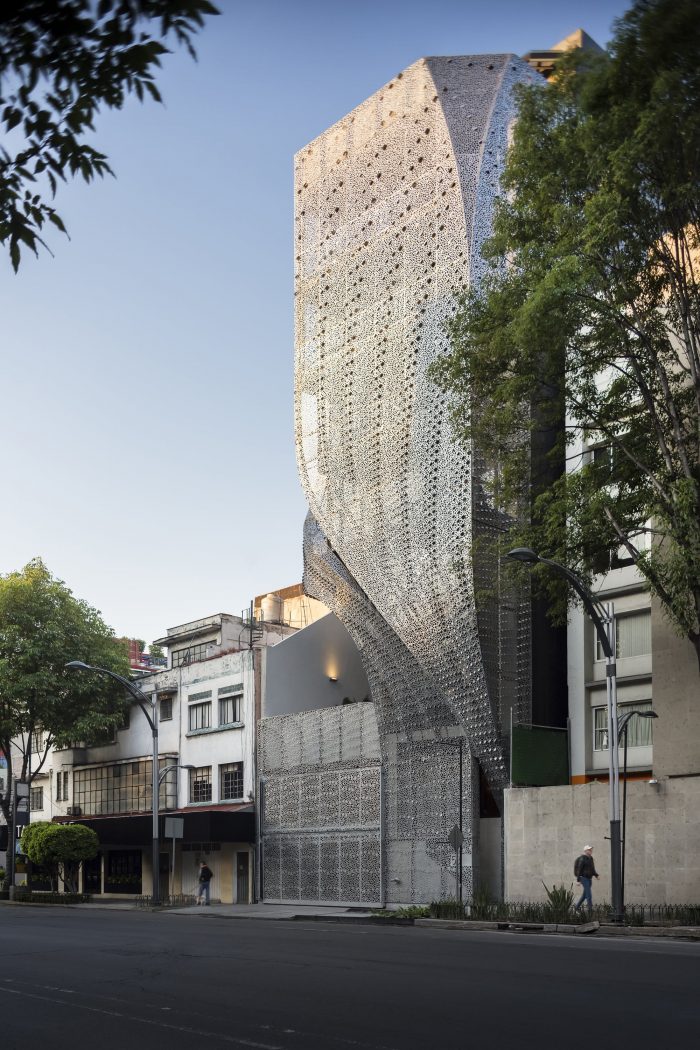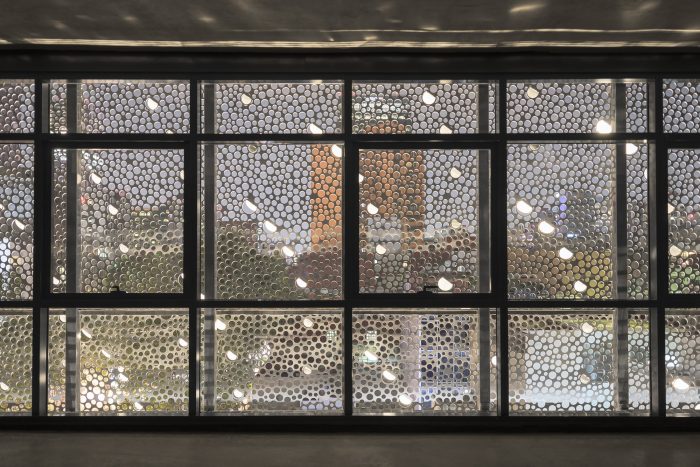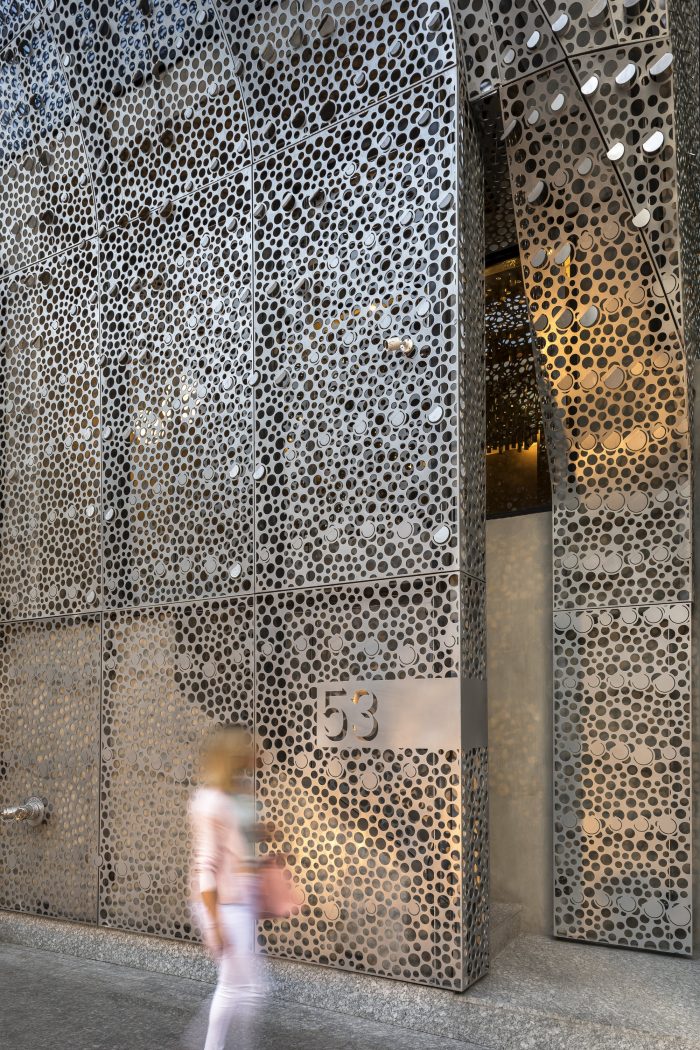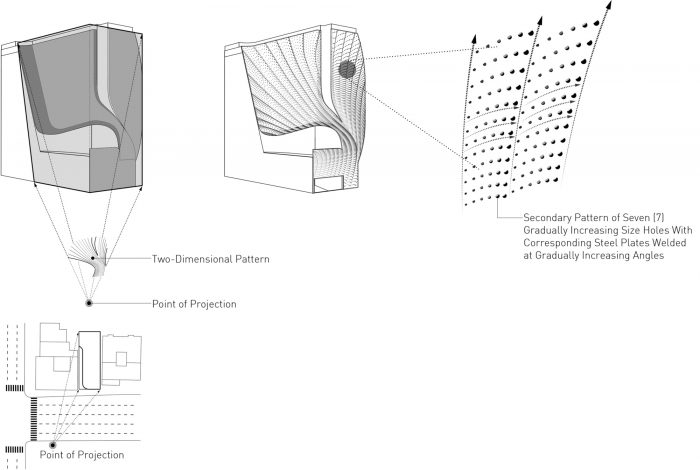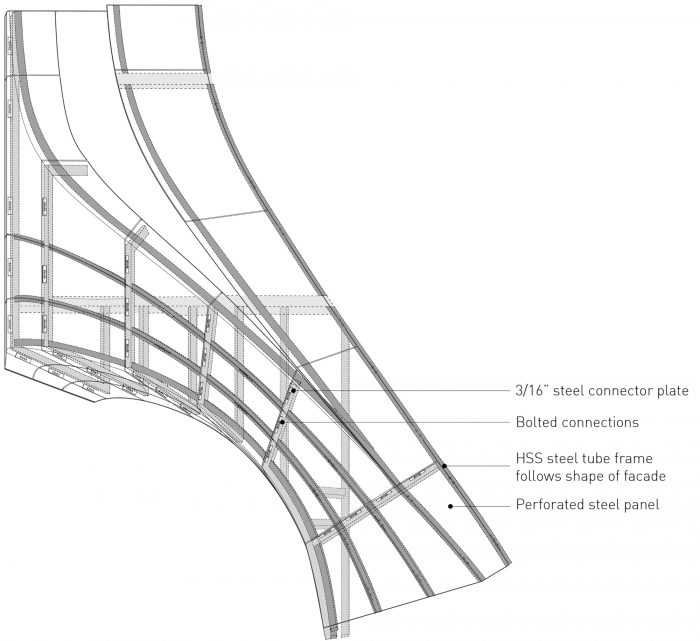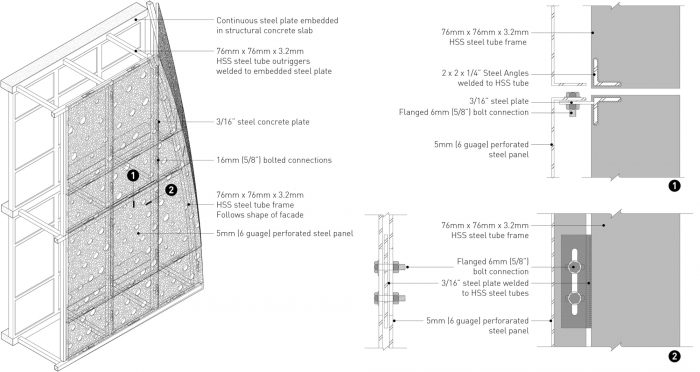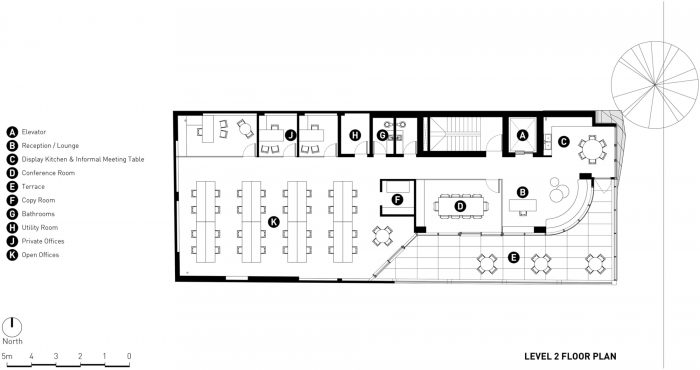由Belzberg建筑事务所设计的Profiles,调查了墨西哥城一个街区中段物业的设计潜力。这座八层楼高的24,000 SF的办公大楼位于Cuauhtémoc社区一条繁忙的单行道上,与一座历史悠久的三层楼建筑相邻。墨西哥城的密度特点是在整个城市中,不同高度的建筑彼此相邻,绝大部分街区中的建筑都将设计元素集中在面向街道的立面上。
Profiles, designed by Belzberg Architects, investigate the design potential of a mid-block property in Mexico City. The eight-story, 24,000 SF office building is located adjacent to a historic three-story building on a busy one-way street in the Cuauhtémoc neighborhood. Mexico City’s density is characterized by buildings of varying heights adjacent to one another throughout the city with the vast majority of mid-block buildings focusing design elements on the street-facing façade.
然而,新建筑的宽面高于较矮的相邻建筑,尽管它们在城市领域中很突出,很显眼,但往往没有设计。认识到这一点,Profiles重新考虑了街区中部建筑的侧面,认为它很重要,能够提供否则就会错过的好处。
However, the broad side of new buildings that rise above shorter adjacent buildings is often undesigned despite their prominence and visibility in the urban realm. Recognizing this, Profiles reconsiders the side façade of mid-block buildings as important and able to provide benefits that would otherwise be missed.
Profiles与南面较矮的邻居相距较远,在金属外墙板的后面有落地窗的玻璃。这些面板不仅为窗户提供了外部遮阳,而且还最大限度地提高了与城市领域、街道上的行人和迎面而来的车辆的联系。
Profiles is set back from its shorter neighbor to the south and are glazed with floor-to-ceiling windows behind the metal façade panels. These panels not only provide exterior shading for the windows but also maximize the connection to the urban realm, pedestrians at street level, and oncoming vehicular traffic.
每个外墙都是用定制的穿孔钢板包覆的,上面涂有静电涂料。面板上有不同直径的孔,并覆盖有较大的孔和相应的钢片,这些钢片以不同的角度离开表面。次要的图案是通过从人行道上的一个有利位置将二维图案投射到建筑的弯曲的三维形式上而叠加的。
Each facade is clad with custom-perforated steel panels coated with electrostatic paint. The panels are perforated with a field of varying diameter holes and overlayed with a secondary pattern of larger holes and corresponding steel discs that angle away from the surface at varying degrees. The secondary pattern was overlayed by projecting a two-dimensional pattern from a single vantage point on the sidewalk onto the building’s curving three-dimensional form.
使用逐渐扩大的开口的重复图案,视觉效果是模仿织物窗帘的绒毛而产生的扫荡渐变。留在面板上的钢盘改变了尺寸,通过软化和非物质化钢的外观来进一步增加深度。倾斜的圆盘还创造了动态的视觉效果,随着照明条件的变化–不同灯光和颜色的反射,投下阴影,有时似乎完全消失。从内部来看,这些面板在功能上为落地窗提供了外部遮阳,以减少热增益和眩光,同时在美学上提供了城市的抽象视图,作为一个点状的颜色领域。
Using the repeated motif of gradually enlarged openings, the visual effect is of sweeping gradations mimicking the tufts of a fabric curtain. The steel discs left attached to the panels change in size to add further depth by softening and dematerializing the appearance of the steel. The angled discs also create dynamic visual effects as lighting conditions change —reflections of varying lights and colors, casting shadows, and at times seeming to disappear completely. From the interior, the panels functionally provide exterior shading for the floor-to-ceiling windows to reduce heat gain and glare while aesthetically offering abstract views of the city beyond as a pointellated field of color.
设计中优先考虑了采光、通风和通向室外空间的问题。从相邻物业后退的结果是,建筑占地面积不仅满足了当地规划法规要求的开放空间,还在二楼提供了一个宽敞的室外露台,并确保所有室内空间有充足的日光和通风。
Daylighting, ventilation, and access to outdoor space are prioritized in the design. The setback from the adjacent property results in a building footprint that not only satisfies the open space required by the local planning code but also provides a generous outdoor terrace on the second floor and ensures ample daylight and ventilation for all interior spaces.
二楼的露台是私人的、安全的,但从街道和邻近的建筑可以看到,同时在上面的每一层都提供了多个较小的阳台,虽然隐藏在装饰性金属板立面的后面。该建筑的屋顶被设计成一个共享的休闲空间,有小木屋、遮阳花架和城市的全景。
The second-floor terrace is private and secure yet visible from the street and neighboring buildings while multiple smaller balconies are provided at each level above though concealed behind the decorative metal panel façade. The building’s rooftop is designed as a shared amenity space with cabanas, shade trellis, and panoramic views of the city.
Architects: Belzberg Architects
Area : 2210 m²
Year : 2018
Photographs :LGM Studio
Manufacturers : Guardian Glass, El Roble, Piedras Naturales
Structural Engineering : Arup
Electrical Engineer : Arup
Subcontractors : El Roble
Design Architect : Hagy Belzberg, Brock DeSmit, Joseph Ramiro
Executive Architect : Alberto Djaddah, Hugo Balderas, Diego Hernandez
Interior Design : Jennifer Wu, Josh Hanley
Project Team : Cory Taylor, Kris Leese, Jessica Hong, Elizabeth Lee, Chris Sanford, Carolina Murcia, Carlos Pacheco, Jacobo Levy, Omar Torres
Mechanical And Plumbing Engineers : Arup
General Contractor : Grupo Anima
City : Mexico City
Country : Mexico


